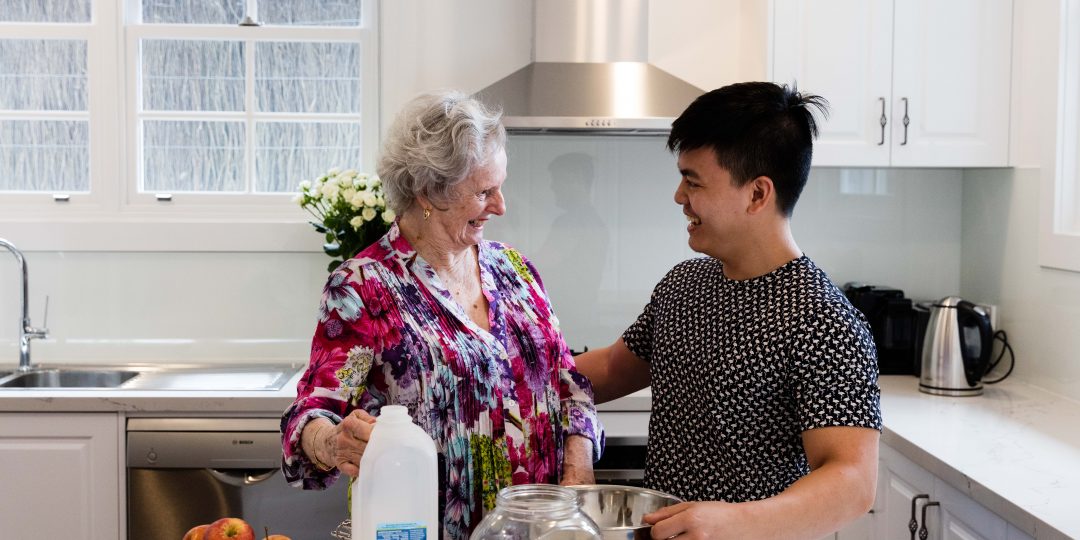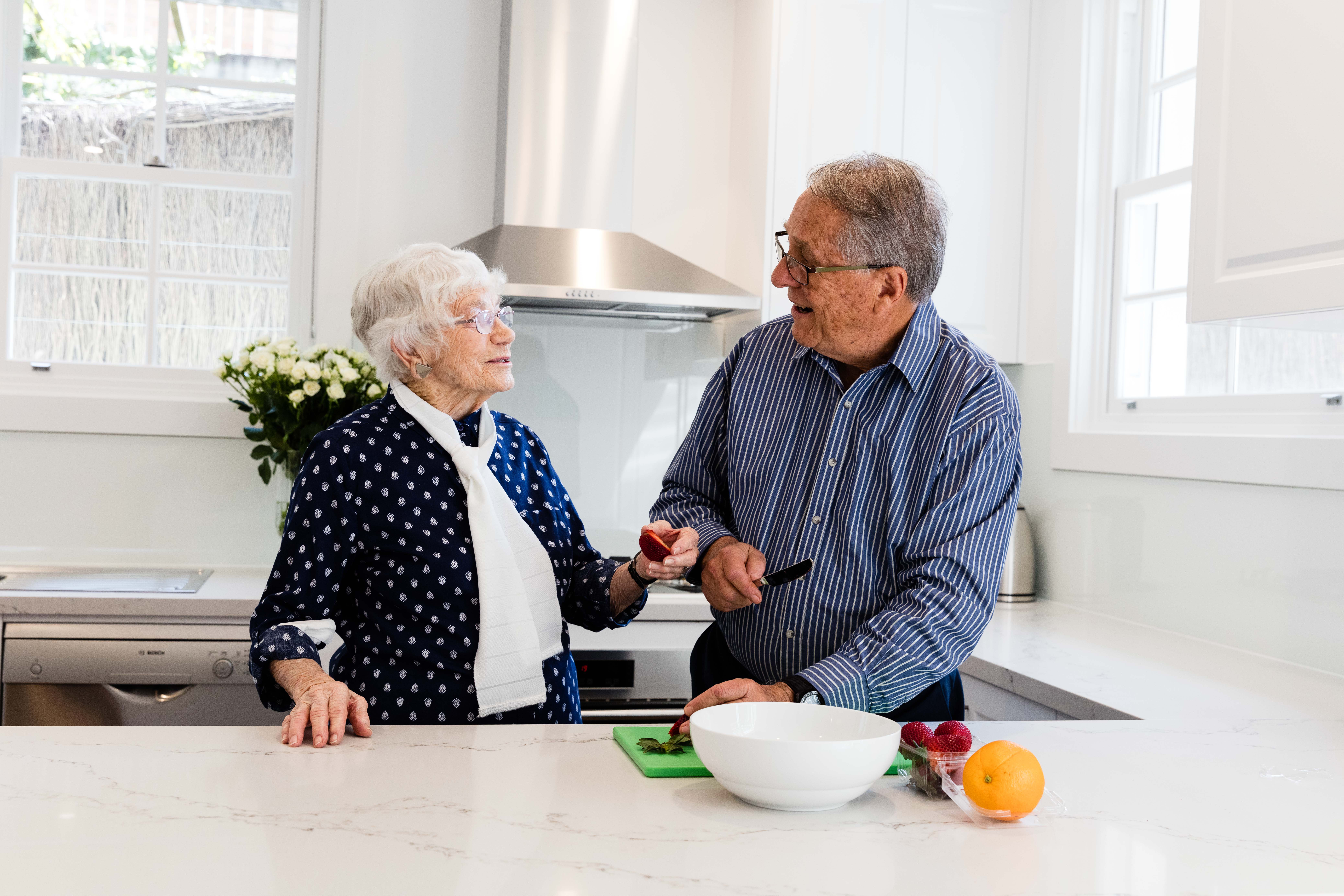Here at GHA we do things differently. In fact, quite a bit differently.
We spoke to Founder and Co-CEO of Group Homes Australia, Tamar Krebs:
I want to share about four (4) key areas where Group Homes Australia (GHA) stands out for its innovative approach: engagement, environment, staff and family involvement.
(1) Engagement
One of the biggest differences that new staff notice when they come to GHA from other aged care organisations is the way our residents are so engaged and involved.
And it’s true. Our Homemakers work alongside residents to get them involved in all sorts of day-to-day activities of living. This could be cooking, gardening, or shopping: anything that is purposeful and meaningful for that person. Yes, Homemakers need to be able to cook a meal – but just as importantly they need to be able to work alongside residents to encourage and support those who want to be involved in cooking meals, encourage involvement in serving the meals and sitting at the dining room table, with the residents, engaging in conversation during the meal.
We also work hard to support people with dementia to stay active in their local communities – whether that’s by teaching the local café staff a few things about dementia, or by supporting a resident to keep up with walks around their neighbourhood. A resident may display unmet needs by using inappropriate language. The Homemakers will take the time to explain to the café owner that this is part of the person’s journey and should in no way take offence. The café owners and workers then become part of the support network that keep our residents involved and included in the community.
(2) Environment, design and technology
No matter where a resident goes in a GHA home, the environment is friendly and functional. It looks and feels like an ordinary home – it doesn’t feel like an institution.
Residents know that a living room is a living room because there is a lounge, a coffee table, family photo albums, a resident’s knitted blanket that they brought from home, and maybe even a pet, or a basket of laundry waiting to be folded, and a fireplace, creating a warm, cosy environment. The kitchen looks and smells like a kitchen where there are freshly baked muffins, the kettle ready to be boiled and a soup simmering on the stove. Before a meal, residents will be encouraged to participate in chopping and peeling vegetables and setting of the table. The garden is open and inviting. A resident will walk into the garden and find a vege patch that needs to be watered, leaves that need raking and a space that is tranquil and inviting.
It’s also a dementia-specific environment, which means we’ve thought about how to make the space engaging, functional and purposeful.
(3) Staff model
Here at GHA, we can’t say enough good things about our Homemakers.
By having the same people take care of the residents’ day in and day out – that precious familiarity and continuity – Homemakers can create a life that residents can flourish in.
Homemakers are a key part of GHA’s commitment to a ‘social model’. The more standard approach in aged care is a ‘medical model’, where registered nurses oversee the work of care staff.
At GHA, Homemakers are responsible for running the home. This is demonstrated through getting to know the residents individual routines, from when residents like to wake up in the morning, when they want to have their shower, what they enjoy eating for meals, alerting the registered nurse to any clinical needs and changes, and what engages each individual resident.
When staff come to work for GHA from other facilities, they’re not used to working without their ‘lists’. They’re not used to saying, ‘So when does Mrs Smith want to wake up in the morning?’. They are used to a ‘task focused’ approach to care.
(4) Family involvement
Families are partners in the care that we deliver, and we take a very proactive approach to communicating with families.
In many aged care facilities, families are involved, but usually only when there’s a problem or a crisis. We want families to hear about the cherished moments and engagement of a resident, not just about infections, sores or incidents.
If a resident is having a good day, we want the staff to share that with the family. If a resident went on an outing, or had a beautiful experience on a bush walk, or went to the beach, staff will tell family about that – in real time, with photos or videos. And on days that are a struggle, the Homemakers will share with families the strategies that they used, what worked well and what didn’t, and will troubleshoot with the families. It’s about a partnership and understanding that not every day is going to be the same. We strive not for perfection, but for excellence in care.
The last word
All the pieces of the puzzle – the staffing model that results in continuity of care and supports active engagement, the environment that gets the residents involved, the commitment to involving families – come together to mean that we offer a different approach to dementia care. It’s not one thing on its own.
If we can assist with answering any further questions, please don’t hesitate to contact our Resident Relations Manager for support on 1300 015 406 or email Group Homes Australia Home Support Office. The Group Homes Australia (GHA) care model is firmly built on the belief that people living with dementia thrive in a home environment. GHA homes are ordinary homes, on ordinary suburban streets, where 6 to 10 residents live together. Residents have 24-hour care, provided by a team of staff that we call ‘Homemakers’.







0 Comments